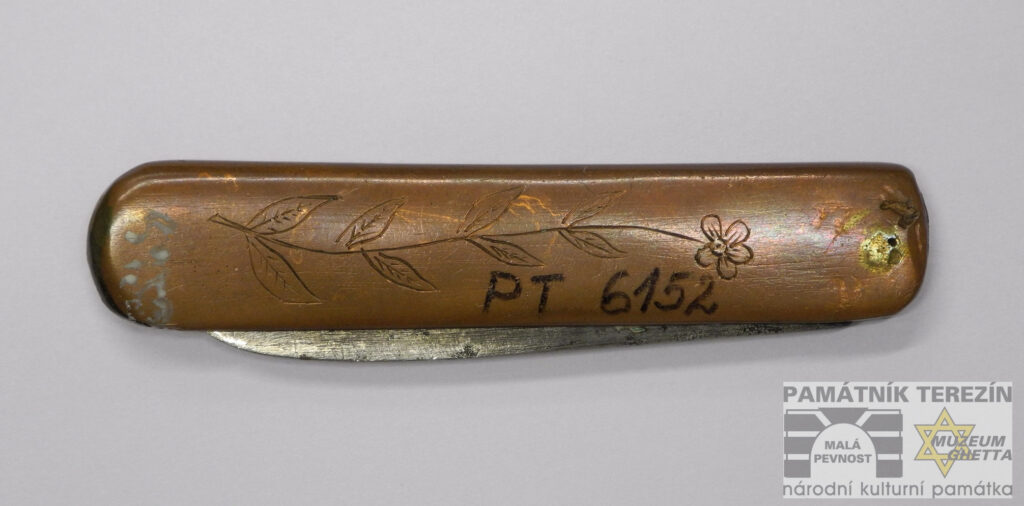Stanislav Šmolík was born to father Alois and mother Anežka (née Loukotová) in Libušín near Kladno on June 25, 1906. After finishing his school attendance he earned his living as a tinsmith. Already in his youth he came into contact with communist ideas, and in 1925 he joined the Communist Party of Czechoslovakia.
Shortly after the Nazi occupation of the Czech lands in March 1939 the German security forces launched a mass arrest action against leftist-oriented citizens, German émigrés and Jews. Codenamed Aktion Gitter (Action Bars), this police crackdown also hit the Kladno region where many communists were detained. Another wave of reprisals came in June 1939 after the shooting of Wilhelm Kniest, chief constable of the German Order Police. His death triggered off a renewed spate of arrests since the culprit could not been captured for a long time. These two clampdowns paralyzed the entire underground resistance network, including the Kladno district committee of the Communist Party of Czechoslovakia. Stanislav Šmolík, who had the benefit of being relatively unknown to the authorities in Kladno as he had moved into the district only in 1938, was actively involved in the subsequent revival of the anti-Nazi network. He was helped by the newly appointed regional secretary of the Communist Party, Ladislav Ševčík (1908–1943) from Ostrava, cover name Šrámek, who was hiding in Šmolík´s flat for some time. The reconstructed underground communist resistance group then focused primarily on publishing leaflets, distributing the communist newspaper Rudé právo and organizing money collections for the families of arrested members.
Stanislav Šmolík was as a member of the Kladno district committee of the underground Communist Party until a random house search. Even though this incident had ended without any consequences for Šmolík himself, he was rather recalled on conspiracy grounds and served as a messenger for the organization. Gestapo agent Jan Vacek denounced most of the members of the party´s district committee at the end of April 1940. After their arrest, Ludvík Kuna, one of the detained, gave away Šmolík´s name only after brutal interrogation. The Gestapo arrested Stanislav Šmolík on May 6. He then spent over a year in investigatory custody in the prisons in Zwickau and Dresden; in September 1941 the Higher Land Court sentenced him for preparing high treason. However, Šmolík, who began serving his three-and-a-half-year long sentence in Waldheim, contracted tuberculosis and had to be transferred in September 1943 to the prison in Mírov in Moravia, reserved for inmates suffering from lung diseases. He was supposed to be released in February 1944 but just as many other inmates he was kept in jail. This was followed by his transfer to Prague-Pankrác and then, at the end of March, he was sent to the Gestapo Police Prison in the Small Fortress.
Being a skilled and experienced tinsmith and plumber, Stanislav Šmolík was placed in cell No. 23 in the Workshop Court in the Small Fortress. The inmates imprisoned in this section enjoyed somewhat better conditions, as most of them served in workshops which offered certain benefits and advantages Šmolík repaired various things, e.g. kitchen utensils or cans and he allegedly made a child pedal car, an order from the prison commander Heinrich Jöckel (1899–1946). In his leisure time Šmolík could secretly apply himself to making different smaller objects. One such object was a preserved pocketknife with an engraved stem with petals and a blossom on one side of its copper handle and the inscription “Terezín 1944” on the other. Kept under the inventory number PT 6152, this knife was eventually donated to the collections of the Terezín Memorial by Stanislav Šmolík´s fellow inmate, varnisher František Morávek.
In October 1944 Stanislav Šmolík was sent to the Flossenbürg concentration camp with an accompanying note “return undesirable”. Due to his bad health he had avoided being sent on a death march and was liberated by the US Army together with the rest of the inmates on April 23, 1945. He could return home only after one-month quarantine. He was moved to Bohemia on May 28 where he kept recovering from his diseases and hardships caused by incarceration for several months. Partially recovered, Stanislav Šmolík managed to return to normal life in Kladno by the end of 1945.
Michael Michner




